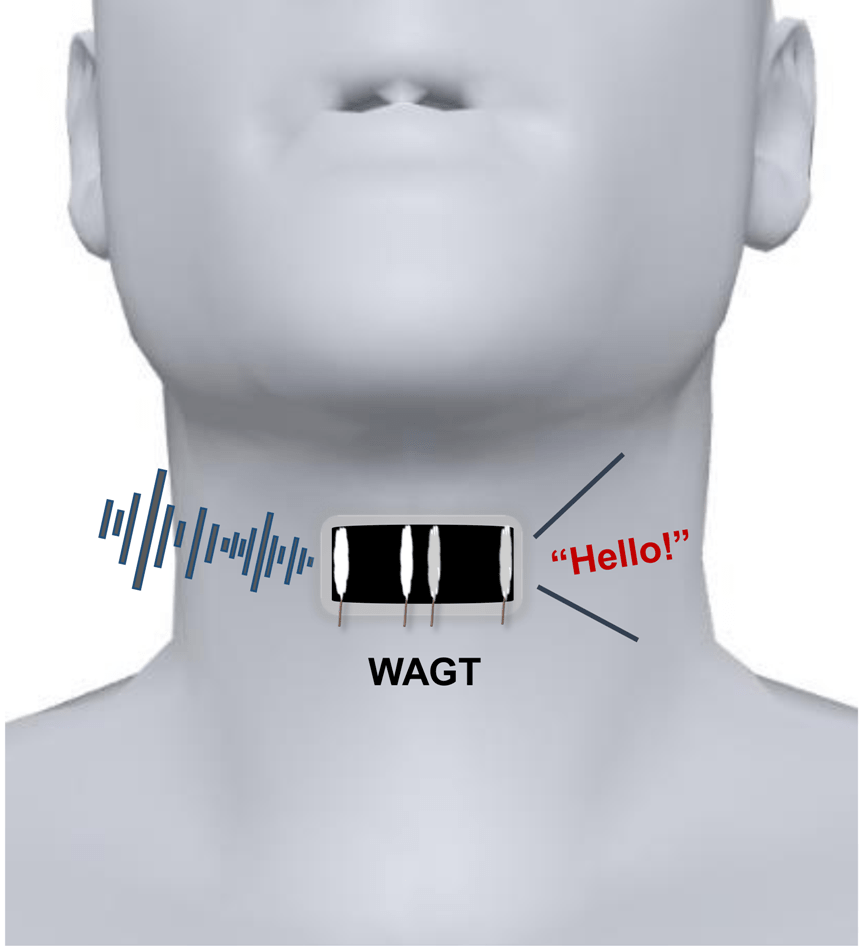Jul 25 2019
Majority of the people underestimate the value of speech; however, it is, in fact, an intricate process in which both motions of the mouth and vibrations of folded tissues, known as vocal cords, take place within the throat.
 A wearable artificial graphene throat, abbreviated here as “WAGT,” can transform human throat movements into different sounds with the training of the wearer. (Image credit: Adapted from ACS Nano 2019, 10.1021/acsnano.9b03218)
A wearable artificial graphene throat, abbreviated here as “WAGT,” can transform human throat movements into different sounds with the training of the wearer. (Image credit: Adapted from ACS Nano 2019, 10.1021/acsnano.9b03218)
The ability of a person to speak can be lost if the vocal cords suffer injuries or other lesions. At present, scientists have reported in ACS Nano that they have created a wearable artificial throat that, when adhered to the neck as a temporary tattoo, can convert throat movements into sounds.
Researchers have created detectors that quantify motions on human skin, such as heartbeat or pulse. However, the devices cannot essentially transform these motions into sounds.
Recently, He Tian, Yi Yang, Tian-Ling Ren, and team members created a prototype artificial throat with both potentials; however, as the device had to be attached to the skin, it was not much comfortable to wear for extended time periods. Hence, the scientists wished to develop a thinner, skin-like artificial throat that would stick to the neck just as a temporary tattoo.
The scientists laser-scribed graphene on a thin sheet of polyvinyl alcohol film to create their artificial throat. The size of the flexible device was 0.6 by 1.2 inches or around twice the size of a person’s thumbnail.
Using water, the scientists stuck the film to the skin above a volunteer’s throat and connected it with electrodes to a small armband that comprised of a microcomputer, circuit board, decoder, and power amplifier.
When the volunteer mimicked the throat movements of speech without any noise, the instrument transformed these movements into emitted sounds, like the words “No” and “OK.” The scientists state that someday, people could be taught to produce signals with their throats that the device would convert into speech.
The authors recognize funding from the National Key R&D Program of China, the National Natural Science Foundation of China, the National Basic Research Program of China, the Beijing Innovation Center for Future Chip, the Beijing Natural Science Foundation, and the Shenzhen Science and Technology Program.